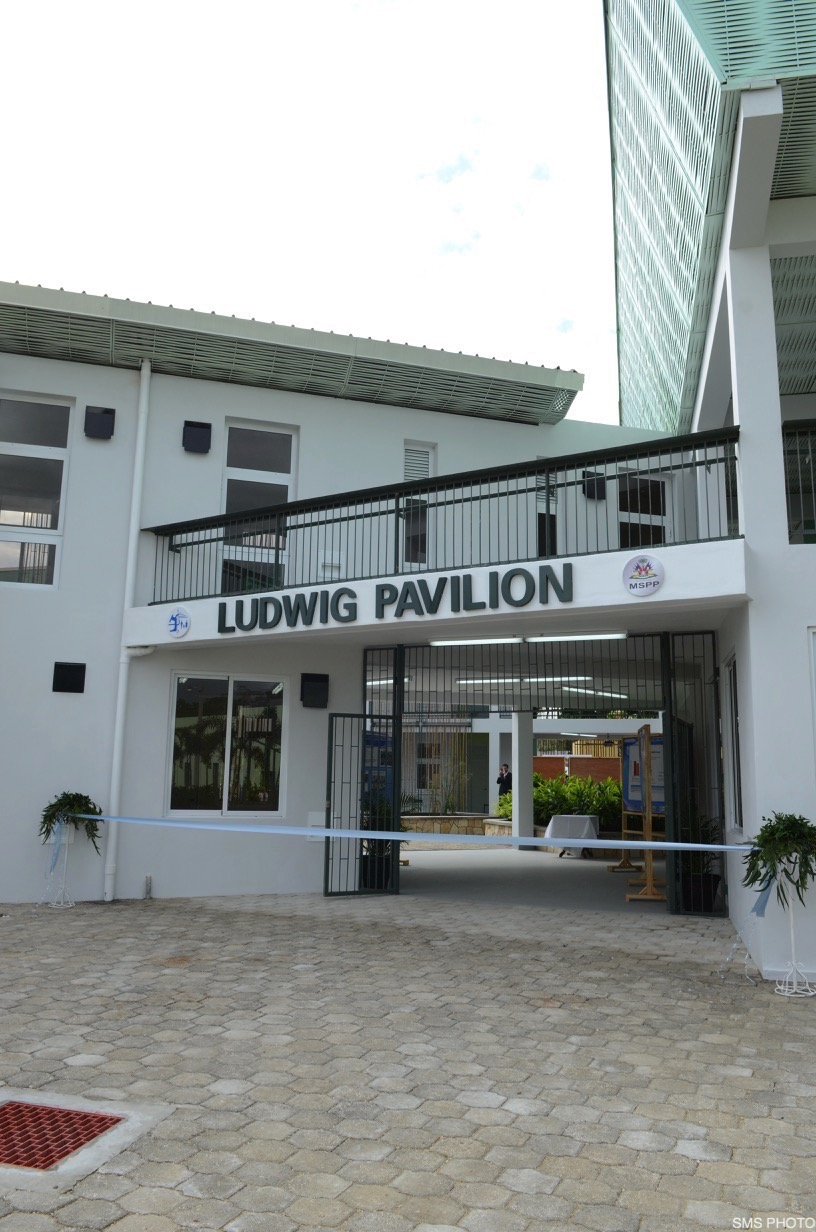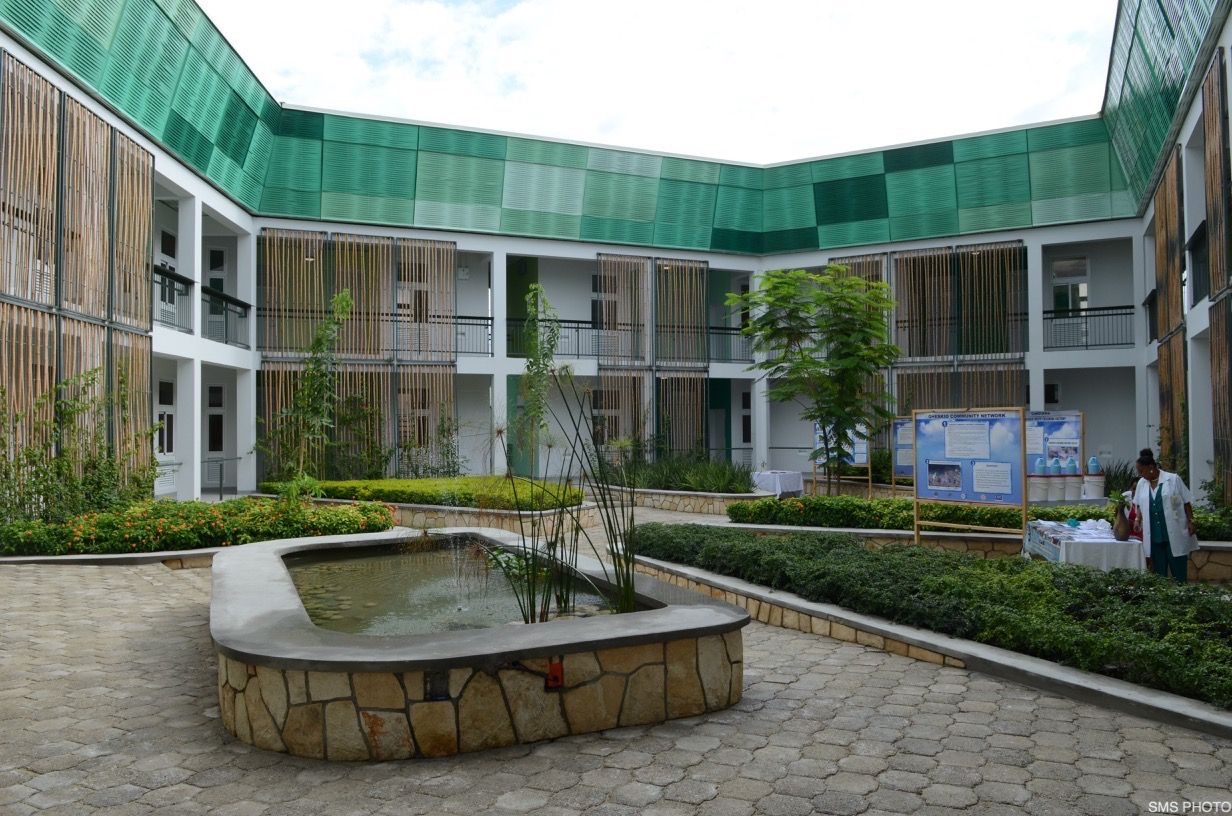GHESKIO opens new tuberculosis and cholera hospitals that embrace Haiti's abundant sunlight and tropical breezes
One of the destroyed TB hospitals was run by GHESKIO, a Weill Cornell Medicine-affiliated medical organization founded by Dr. Jean Pape '75, the Howard and Carol Holtzman Professor in Clinical Medicine. Established in 1982, the institution was the first in the world dedicated to the fight against HIV/AIDS — its name is the French acronym for "Haitian Group for the Study of Kaposi Sarcoma and Opportunistic Infections" — but it has since expanded to treat other infectious diseases and offer primary care services.When a major earthquake devastated Haiti in 2010, it not only took the lives of 220,000 people, but severely damaged the impoverished nation's medical infrastructure. Among the buildings lost in the 7.0-magnitude quake were the five major tuberculosis hospitals in the capital city of Port-au-Prince. "Patients with TB were on the streets," recalls Dr. Warren Johnson, the B. H. Kean Professor of Tropical Medicine. "They didn't have access to meds. They didn't have a roof over their heads. They were living in tents, which is the worst conceivable environment."

Healthy atmosphere: The new TB hospital (above and below) features a comfortable courtyard and natural ventilation. Photos provided
In the earthquake's aftermath, GHESKIO opened a tent hospital for patients with the worst form of tuberculosis, multi-drug resistant TB. Then, within 10 months of the disaster — and with some 1.5 million people still without permanent homes — Haiti faced the world's worst outbreak of cholera in recent history. So, in response to that ongoing epidemic — which has affected 800,000 people and claimed 8,500 lives over the last four and a half years — GHESKIO opened a second tent facility, this one dedicated to cholera.
Out of these temporary fixes grew awareness of a need for a research-based, long-term care facility. People with multi-drug resistant TB, for example, require lengthy hospital stays, with treatment lasting from 18 months to two years. "We required a place where we could provide quality care in a dignified environment for patients," Dr. Johnson says, "and where we could conduct studies to improve therapy, find new drugs and evaluate new regimens."
As a result, GHESKIO has built new hospitals in Port-au-Prince dedicated to TB and cholera — facilities whose designs have been lauded by patients, medical professionals and architectural critics alike. Established through collaborative efforts by Weill Cornell Medicine, GHESKIO, the Haitian and U.S. governments, the CDC, USAID and medical technology firm Becton Dickinson, the centers officially opened in March with a ceremony at the new TB hospital, known as the Ludwig Pavilion. Located at GHESKIO's newest site near Haiti's main airport, the facility is named in honor of benefactor Ed Ludwig, former CEO of the global medical technology firm Becton-Dickinson, and his wife, Kathy; the company gave $1 million toward the project, and the Ludwigs made a personal contribution as well.
Boston-based MASS Design Group created the facilities, partnering with two Haitian engineering firms. The buildings have numerous features that advance GHESKIO's medical and social missions. For example, their furniture was designed and constructed by participants in a vocational training program that GHESKIO opened in 2013 to improve economic opportunities for women at risk for HIV.
Two stories high, the TB hospital has private rooms for 32 patients configured around an open-air garden courtyard; the cholera facility is a one-story pavilion at GHESKIO's original site downtown. Both are innovative spaces that aim to set a new standard in design, development and patient care. New York Times architecture critic Michael Kimmelman wrote that the buildings "could serve as relatively light-footed models for other struggling countries that lack resources for high-end Western-style hospitals." He added that they could even "nudge hospitals in the United States away from the mid-century model of sealed buildings that rely on imperfect mechanical systems costing a king's ransom and gobbling up energy."

Understanding of disease transmission dictated design. While the architects had experience in building healthcare facilities, they also collaborated closely with Dr. Pape. "We worked on every detail, on every single space that was going to be built," Dr. Pape says. "We reviewed carefully how our staff would come to examine patients." Tuberculosis, for example, is a highly communicable, airborne disease that's transmitted in enclosed spaces — so the hospital's designers sought to maximize sunlight, which kills the bacteria that causes the disease, and to enhance passive ventilation through open-air spaces. Physicians and nurses have areas for treating patients outside of their rooms, at the edge of a courtyard; janitorial staff also have special means of egress to clean patient bathrooms without entering adjacent bedrooms. As Dr. Pape told the New York Times: "Architecture and health are inseparable. A building that is ugly, with no fresh air, no dignity or common sense, is a place people will avoid, and this encourages epidemics."
Cholera spreads through contaminated water, so that facility's designers faced the challenge of how to improve a wastewater system in a city that doesn't yet have the capacity to do it itself; while Port-au-Prince plans to build underground wastewater infrastructure, it likely will be at least 20 years before the system is fully implemented. Currently, two-thirds of residents lack access to a clean, private toilet and more than one-third lack access to clean drinking water. (The city is not alone in this: 1 billion people around the world live in informal urban settlements lacking in civic infrastructure and regulation.) In Haiti, diarrheal disease is the second-leading cause of death for children under five; globally, such diseases cause one in every five child deaths each year.
The cholera facility features a dedicated wastewater treatment system designed to prevent recontamination of the water table and thus limit spread of the disease. Deep basins limit spillage of wastewater, which then passes through vertical chambers over the course of five days, as anaerobic bacteria breaks down the hazardous waste. The interior is designed for ease of cleaning, which occurs four times a day.
All these features help keep diseases from spreading — but a key part of the designers' vision was to improve the day-to-day lives of the patients themselves. People who are sick and suffering need to be in a pleasant atmosphere, Dr. Pape emphasizes, in comfort and surrounded by beauty. As Haitians with TB and cholera began moving from tents into the new facilities in May, he says, he saw looks of astonishment on their faces. As he recalls: "They told me, 'We're just surprised that it is so nice.'"
— Andrea Crawford
This story first appeared in Weill Cornell Medicine, Vol. 14, No.2.

